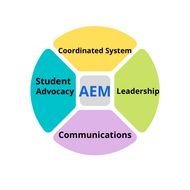The Learner Variability Project In the Field: A Guide to Understanding and Addressing Learner Variability
(View Complete Item Description)This guide is designed to support your own professional learning around learner variability as well as ideas and resources for sharing with other educators. Did you know that there is no such thing as an average learner? In fact, each and every learner is different across a whole child spectrum—from the content they know, cognitive abilities, social and emotional factors, and background. Our experiences and our environment shape the way we think and feel about learning and our readiness to process new information. Understanding the research behind learner variability helps us disrupt the inequities of a one-size-fits-all education. What is learner variability? It is a recognition that each and every student has a unique set of strengths and challenges that impact the way we learn. Learning science research supports the concept of learner variability and provides pathways and strategies for student success in school and beyond. For example, a factor of learning such as working memory, critical to learning new information, can be affected by emotions or sleep. Additionally, it helps us understand how factors can be affected by context. How students learn in person versus virtually or from one subject to the next can be very different. Students may respond positively to different strategies in different situations or work better with different people in different classes. It also helps us understand important social and emotional connections like how a Sense of Belonging can affect students’ readiness and Motivation to engage in learning. Did you know that learning styles is a myth? Learning styles is a popular idea that many people learned in school. It says that we are either auditory, visual, or kinesthetic learners. But, that is not what research tells us. Research says we learn best when all three options are present and that which modality we rely on may change according to the task. For instance, the way you remember a phone number may be different from the way you learn about a historical event or a math formula. Furthermore, people who think of themselves as only learning one way, (e.g., I am a visual) learner, can close themselves off from other learning experiences.
Material Type: Teaching/Learning Strategy






